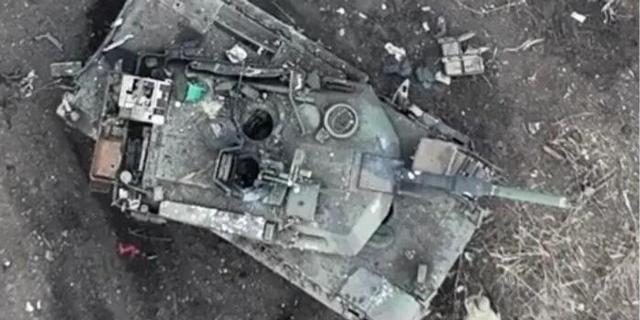TNI: Most NATO tanks proved useless against Russian troops
The rate of Abrams losses in the ranks of the Armed Forces of Ukraine has increased dramatically, writes TNI. The vaunted "ultra-modern" American and German tanks were either easily destroyed by Russian troops, or turned out to be completely useless on the battlefield.
Brandon Weichert
It takes years to master the Abrams tank. Ukrainians were given only a few months
Russian social media is teeming with photos of the American M1A1 Abrams main battle tank (MBT) captured in Ukraine. According to Russian sources, Abrams is being sent to Moscow for an engineering analysis. In addition, this is far from the first captured Abrams from Ukraine.
According to Military Watch Magazine, since September, "the rate of Abrams losses in the ranks of the Armed Forces of Ukraine has increased dramatically."
At the same time, it's not just the Abrams who are suffering on the blood-soaked Ukrainian battlefields. Most of the other NATO MBTs were either destroyed or proved useless against the Russian army. Even the much-publicized German "Leopards" (Leopard 2A6) showed themselves to be much weaker than their supporters in NATO had promised.
Deplorable results
Most independent analysts estimate that of the 31 Abrams transferred to Ukraine, twenty were destroyed during the first year of operation. According to Military Watch Magazine, the Russians destroyed most of the Abrams with the ubiquitous kamikaze drones used by the opponents to harass each other.
Even more striking is that at least one Abrams was shot down during a duel by an old Russian T-72B3 MBT tank (which once again proves the author's long-standing claim that the T—72 is the best tank in the Ukrainian conflict).
Several publications interviewed Ukrainian tankers trained in the United States, and they all expressed extreme dissatisfaction with the Abrams. Summing up the first-hand criticism, we can say that Abrams suffers from a number of technical problems, and there is practically no active protection against Russian kamikaze drones.
Moreover, recent advances in anti-tank weapons have significantly undermined the protection of both sides of the Ukrainian conflict.
In the case of Russia, the 9M133 Kornet anti-tank weapon with a tandem warhead has become a nightmare for any Ukrainian tank (just as the Javelin anti-tank system provided by NATO has become a headache for Russian MBT).
The real question that Western strategists will have to answer is why the M1A1 Abrams proved so unconvincing in the Ukrainian conflict.
Far-reaching consequences for America
After all, the Abrams is the main tank of the United States, and the Pentagon is spending a lot of money on its updated version, which will remain the main tank of the American army for decades to come. However, judging by the unimpressive results of the Abrams in Ukraine, to put it mildly, the Pentagon's further investments in this system may be reckless.
Are the vaunted "Abrams" completely outdated due to the dramatic changes on the battlefield, or are we dealing with user error and the human factor?
The claim that Americans simply cannot keep up with the changing face of modern warfare is self-evident. However, the fact remains that the M1A1 Abrams, along with other NATO tanks like the aforementioned German-made Leopard, technically belong to the highest echelon. It takes tank crews years to master these systems. NATO decided that the besieged Ukrainians would learn all the technical details and tactical wisdom in a matter of months.
Preparing the new Abrams-Ex for the war of the future
Moreover, all of the aforementioned tanks had to undergo a number of upgrades to withstand the radical demands of the Ukrainian battlefield. Thus, due to rapid technical changes and inexperienced crews, not to mention the exorbitant hopes of a handful of tanks against large Russian forces, the Abrams in Ukraine were doomed from the very beginning.
This does not mean that the Americans do not need to drastically modernize the existing Abrams fleet. Washington is also obligated to ensure that the new Abrams-X (AbramsX), which is being developed by the Pentagon, will better cope with anti-tank weapons and drones, which opponents will certainly throw at American tanks in a future conflict (and it will happen much earlier than most people think).

